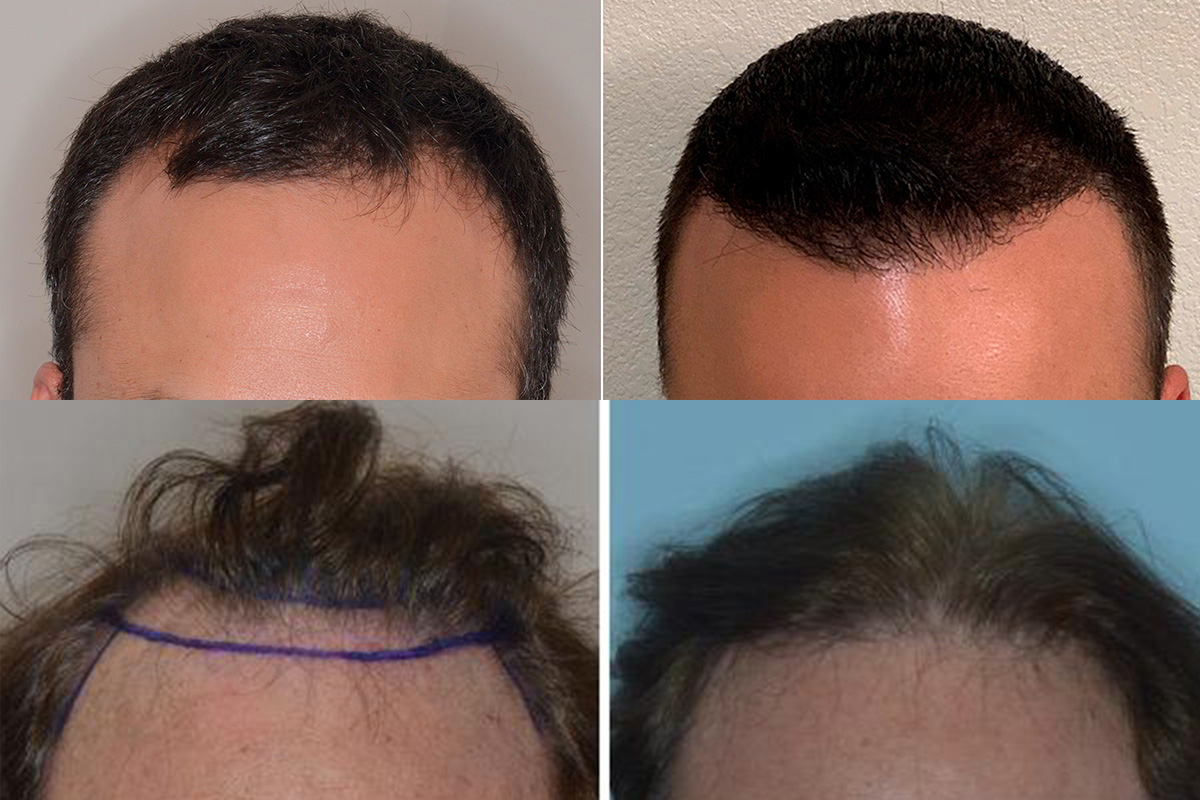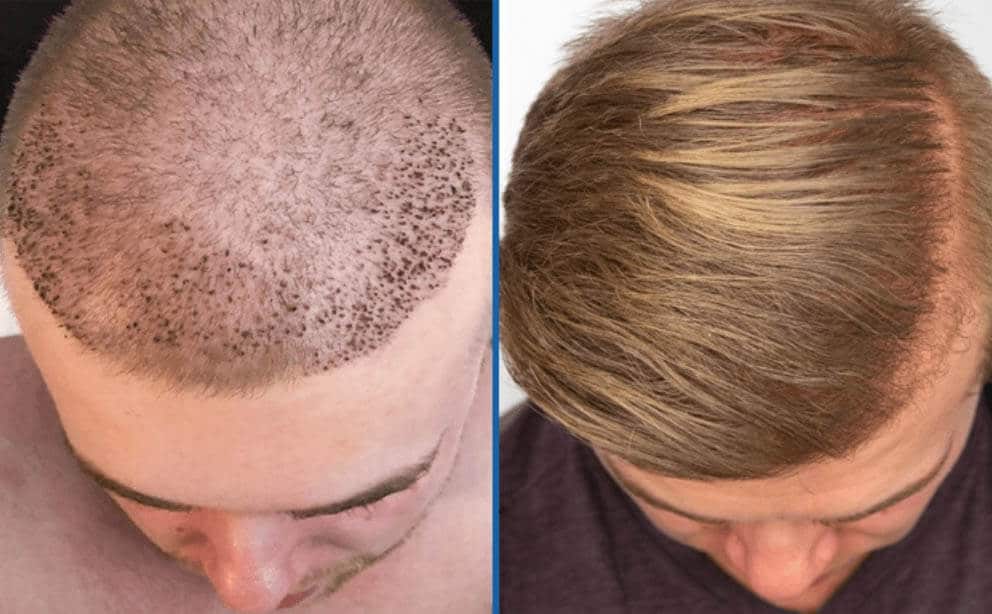hair transplant infection rate
Hair shedding with some temporary boils. Even if an operation is very.

Hair Transplant Miami Fl Hair Restoration Fut Fue South Florida
The incidence of low and serious infections is rare.

. This is yet another side effect that is very common and is seen in a majority of people who have undergone the process. 4 5 months. However the sites of swelling might vary from person to person.
All surgical operations have this risk. How Common Are Hair Transplant Infections. 4 week 6 weeks.
50 An infection rate less than 01 associated with this procedure has been reported in the literature. 50 of hair will penetrate through the scalp with hair fall use rejuvenating medicines on your scalp. A small percentage of patients experience shock loss and all of them completely recover as the hair follicles grow new hair.
A hair transplant which moves hair from one place to another on your head can be done in several ways. In such a circumstance a simple antibiotic prescription from a doctor can address the problem. Hair Transplant Result.
30 of hair will start to penetrate through the scalp. The scalp care routine is quite simple to follow. To be a good candidate youll need to have thicker areas of hair on your head.
Redness or swelling at the infected site. An infection or inflammation of the hair follicles is also a post-procedure risk 215. However in this case the.
Redness or discoloration. Whether it is because of an unsanitary hair transplant procedure or complications that develop following a hair transplant surgery it is possible for your scalp to get infected post-op. Temporary redness occurs in the donor and hair transplant area.
Research has shown that the transplanted grafts of hair can have a survival rate of over 90 percent 10. In this post we will discuss the following. Hair shedding will continue.
Studies show that less than 1 of the people who receive a hair transplant might get a scalp infection. The overall complication rate in our series was 47 including enlarged scar 12 folliculitis 10 necrosis in the donor area 08 keloids 04 bleeding 02 hiccups 02 infection 02 and pyogenic granuloma 02. But according to a study less than 1 of hair transplant patients develop infections after the surgery.
There are also more likely to be side effects such as infection which further damage the chances of hair grafts succeeding. Proper Pre-Op and Post-Op Care Prevents Infection The ideal way to deal with infection is to. Permanent hair loss can happen due to several reasons including types of alopecia.
Signs of Infection After Hair Transplant Surgery Common signs of infection following hair transplant surgery include the appearance of pus around the follicles excessive itching excessive bleeding and swelling of the hair grafts andor donor sites. However it should not be forgotten that there is a risk in the end. To ensure you are practicing all the right measures only operate in hospitals.
As mentioned in the article the incidence of infectious complications of such procedures is less than 01. And in specific hospitals that perform the micro-surgery in surgery rooms. Some common complications and signs of infection after hair transplant surgery include.
Though many causes of hair loss exist by far the most common etiology is androgenic alopecia AGA an androgen-sensitive pattern of hair loss that affects both men and. 1 week 6 weeks. Another research where 65 patients had FUT 7 underwent FUE and one body hair transplant found that just 137 experienced the complication of excessive bleeding and infection either in the donor and recipient area.
The first is that the risk of hair transplant infections is around 1. Localized infections can occur in both. At Longevita you dont have to worry about that.
Wound necrosis or dehiscence at. So here are certain risks and side effects of the hair transplant surgery. The risk of infection after hair transplant is extremely low.
But symptoms that get worse instead of better or linger for more than about a. Hair transplant procedures are quickly becoming some of the most popular restorative treatments in the nation and Denver patients are confident about both the healing and the results. Yes a hair transplant can get infected.
Some bleeding and swelling is normal. Loss of feeling on your scalp. And the main reason behind infections after hair transplant is hygiene.
Hair loss represents a distressing issue affecting a large portion of the population including up to 85 of males and 40 of females and its incidence increases with age for both sexes. Hair transplantation is a cosmetic surgery and hence any complication can seriously impact the cosmetic and psychological outcome for the patient and can have medicolegal implications. The success rate of hair transplant surgery depends on many factors including the skill and experience of the surgeon and the thickness of the.
Hair shedding will occur. This condition can be treated with antibiotics and topical cleansing. 51 Although most of these infections are limited to pustular lesions that respond to antimicrobial therapy and local wound care.
However there is still a chance. Swelling or oedema is a common side effect of hair transplants. Infections are not considered a very common side effect after hair transplant but its a possible one.
Hair transplantation is generally safe and is the most common cosmetic surgery procedure performed in men. So while some people might have swelling on their forehead for others it might be around their eyes. 6 9 months.
38- Shock Loss for 6 months It is normal to see hair loss both in the recipient or donor area between 1-6 months after your hair transplant surgery which is referred to as shock loss. Severe reaction to anesthesia. At the bottom end of the market where a clinic cuts costs and uses unqualified staff the survival rate for individual hair grafts can be less than 50.
However several smaller studies and articles provide some information about the effectiveness of these procedures. Infection is extremely unlikely if the surgery is performed in a well-known facility by an experienced specialist. A hair transplant is a surgical procedure used to treat hair.
Success rates for a FUE hair transplant vary wildly. The first is that the risk of hair transplant infections is around 1. 50 An infection rate less than 01 associated with this procedure has been reported in the literature.
The most common way is grafting.

Fue Frontal Hair Transplant Chicago Il

Fue Hair Transplant Fue Method Procedure And Costs
Best Fue Hair Transplant Estepera

Hair Transplant Infection Tecnifue Best Hair Transplant

10 Side Effects Of Hair Transplantation Positive Health Wellness Infographic Mens Hair Loss Treatment Hair Transplant Cosmetic Surgery

What To Know About Hair Transplants For Black Men

Post Fue Does Hair Grow Back In Donor Area Hair Sure

Which Hair Transplant Method Should We Choose Smile Team Turkey

The First Week Following A Hair Transplant Elcid Tour

How Long Does It Take For Grafts To Set After Hair Transplant Hair Sure

How Much Costly Is Hair Transplant In Ahmedabad Hair Transplant Cost Hair Transplant Help Hair Loss

Does The Hair In The Donor Area Grow Back After It Has Been Removed Cyber Hairsure

Best Hair Transplant Clinic In Hyderabad Vijayawada And Bangalore Hair Transplant Hair Transplant Cost Hair Loss Cure

Infected Hair Plugs Symptoms Causes Risks Treatment

Advanced Hair Transplant Cost Advanced Hair Restoration

Infection And Hair Transplants Chicago Il Risks And Surgical Complications

Fue Hair Transplant Nyc Nyc Hair Transplant Nova Medical

Manual Fue Hair Transplant Hair Center Of Nebraska

What Are The Advantages And Disadvantages Of Hair Transplant Ahs India